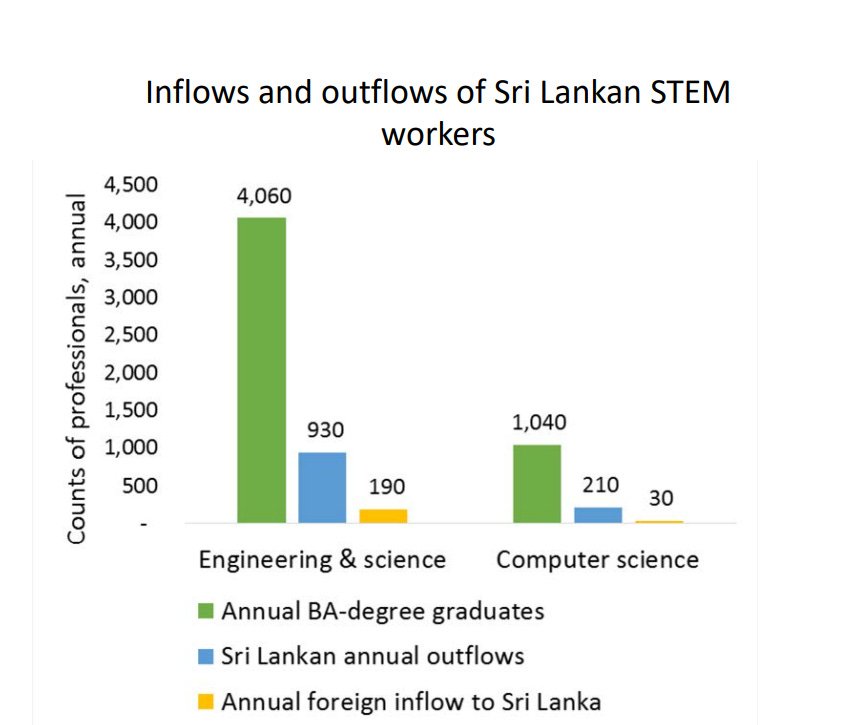By Dhananath Fernando
Originally appeared on the Morning
“We know what should be done to get the country on the right track, but we don’t know how to get power back after implementing the policies.” This is a popular statement I hear often when I meet quite a few politicians. The truth is that politicians do not know how to get back power because it’s not an attractive solution.
The popular policies that bring politicians into power are the very same that inspire their ousting at the very next election cycle. People hardly object to good policies unless the same politicians instigate false propaganda. The Right to Information (RTI) Act was just one such instance.
As an election is due next year, it is vital to understand and remember our priorities, otherwise our politicians are likely to take a wrong turn and pass the buck back to the people.
In an election year, the behaviour of any political party is to completely abandon rational economic reforms and play to populist narratives that result in outcomes that are the complete opposite, with the motive of coming to power.
Bringing down fuel prices and announcing other types of subsidies are common tactics. This is harmful, especially when those benefits cannot be financed sustainably, or in some situations, brought into life in the first place.
Even if it does not retain power, the newly-elected government will have a tough time preventing plans that have already been put in place and enacting better policies.
Political risk
In the current context, we run a very high risk of our politicians bringing us back to square one; i.e. another economic crisis. This, given the fact that 2024 is set to be an election year, is a recipe for disaster.
All political parties will shift their focus to slowly becoming more populist rather than being driven by objectivity. Therefore, the real risk is going back to another debt restructuring if we fail to grow the economy and our exports.
There are many politicians who do not understand the gravity of the need for reforms. Regardless of which party or coalition comes to power, there are fundamental issues that need to be addressed.
The process is more or less the same as handing over a house with structural issues from one tenant (government) to the other. The new tenant cannot function because neither the previous tenant nor the owner (people) is willing to fix the fundamental problems.
Risk of a second debt default
Given the unstable political environment coupled with a country already going through debt restructuring, the risks of a second debt default are astronomically high. As we are still struggling with finalising the first debt restructuring, adding a second one into the mix will leave us in dire straits.
The second one will undoubtedly be harder, especially given the significant increase in interest rates and being unable to print money with the new Central Bank Act. If we fail to raise money through markets in order to roll over debt and if we are not open to increasing interest rates, the only option we will be left with is to default again. At that point, most likely there will be pressure once again to amend the newly-enacted Central Bank Act to allow money printing.
Of course, that would be an inflationary measure and we will be back at square one with a balance of payments crisis, debt crisis, humanitarian crisis, and likely a banking crisis too.
Solutions: A common minimum programme for reforms
Reforms are easier in the first 100 days of any government. If we fail to enact reforms within the first 100 days, more often than not, no reforms will take place. Failing to undertake reforms in 100 days means a cost of a five-year delay plus many bad policy decisions in the middle, which are costly and difficult to reverse.
Ideally, if key political parties come to an agreement before an election on selected reforms and execute them regardless of who comes into power, it will at least ensure some stability for Sri Lanka. There are many ideas that all political parties have in common.
Regarding State-Owned Enterprise reforms, there is no political party that says the Government should run an airline. Even National People’s Power Economic Advisor Dr. Anil Jayantha, in an interview with Advocata, noted that they did not believe the Government should do any business with hotels.
Accordingly, there are many other similar areas where we can arrive at an agreement with little difficulty. Therefore, regardless of who wins elections, people can win and sustain some of the economic reforms.
The truth is that reforms are inevitable if Sri Lanka needs to move forward and for any political party to sustain its power. Implementing bad policies, especially considering the status of our country, will make it very difficult to sustain power, because then we will be setting the standard for a new normal in economics and politics.






